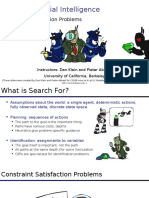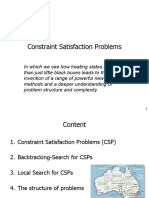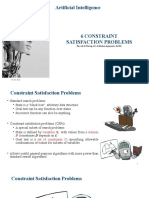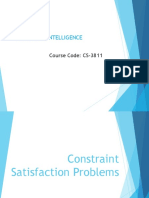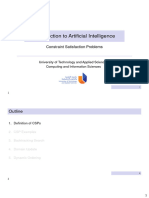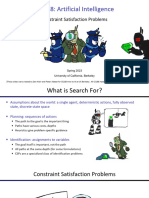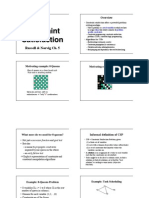0% found this document useful (0 votes)
6 views20 pagesOverview
This document provides an overview of constraint satisfaction problems (CSPs) and their applications, emphasizing the transition from low-level to high-level modeling through variable-based models. It introduces factor graphs, the objective of finding optimal variable assignments, and uses map coloring as an example to illustrate CSPs. The roadmap outlines future topics including backtracking search, dynamic ordering, and approximate search methods.
Uploaded by
tomshopstrashCopyright
© © All Rights Reserved
We take content rights seriously. If you suspect this is your content, claim it here.
Available Formats
Download as PDF, TXT or read online on Scribd
0% found this document useful (0 votes)
6 views20 pagesOverview
This document provides an overview of constraint satisfaction problems (CSPs) and their applications, emphasizing the transition from low-level to high-level modeling through variable-based models. It introduces factor graphs, the objective of finding optimal variable assignments, and uses map coloring as an example to illustrate CSPs. The roadmap outlines future topics including backtracking search, dynamic ordering, and approximate search methods.
Uploaded by
tomshopstrashCopyright
© © All Rights Reserved
We take content rights seriously. If you suspect this is your content, claim it here.
Available Formats
Download as PDF, TXT or read online on Scribd
/ 20


